After leaving The Louvre we moseyed along the north bank of the Seine until we arrived at a bridge that took us part way across the river to one of only two natural islands in the Seine River within Paris known as Île de la Cité. As we crossed the bridge in was impossible not to notice the thousands of locks, of every size, shape and style imaginable that were locked to the railings alongside the bridge.
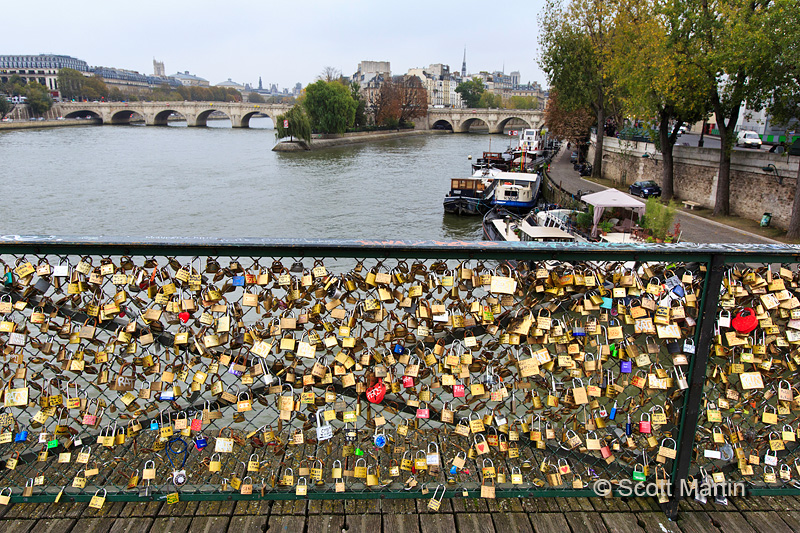
Upon closer inspection each lock was emblazoned with the initial’s or names of the couples who attached the lock to the railing and no doubt pledged their love to each other while they tossed the keys into the river below. I couldn’t help but take a few pics of these locks.
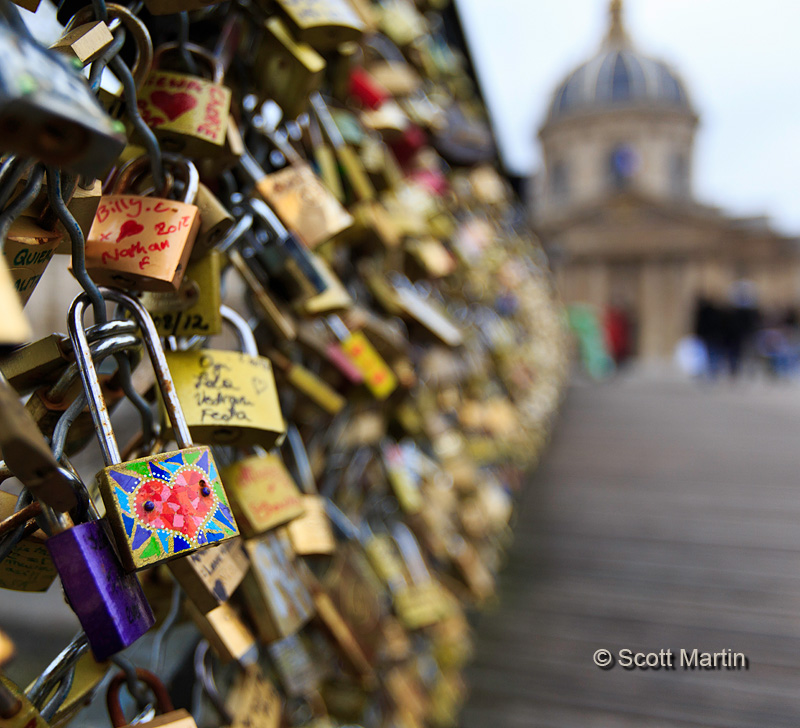
.
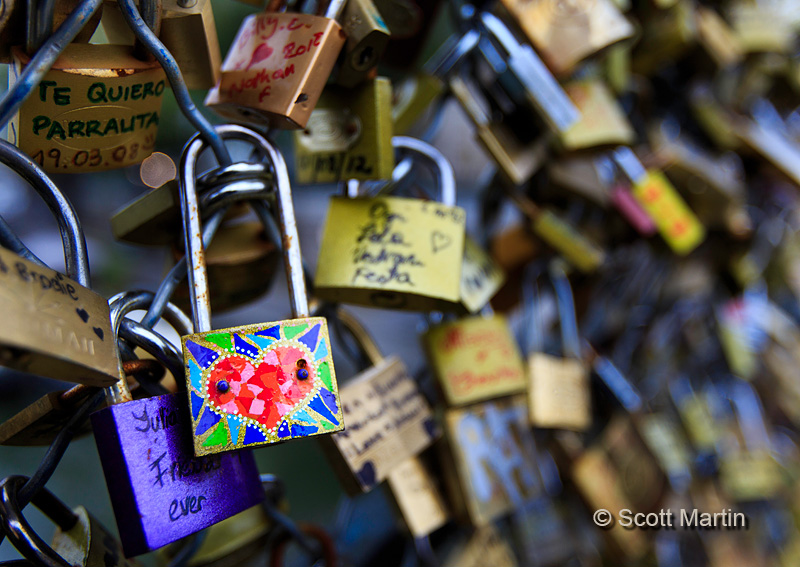
Île de la Cité is a small island that marks the geographic centre of the city and is where Paris was founded. The most famous building on the island is without doubt the cathedral Notre Dame de Paris (Our Lady of Paris) or simply Notre Dame. The cathedral is located in the geographic centre of Paris and there is a brass plaque in front of Note Dame that marks the spot from which all distances around the city are measured.
The western facade of Notre Dame provides the typical view of the building, however the day we were there large portable grandstands were set up in front of the cathedral which precluded a good vantage point for a picture.
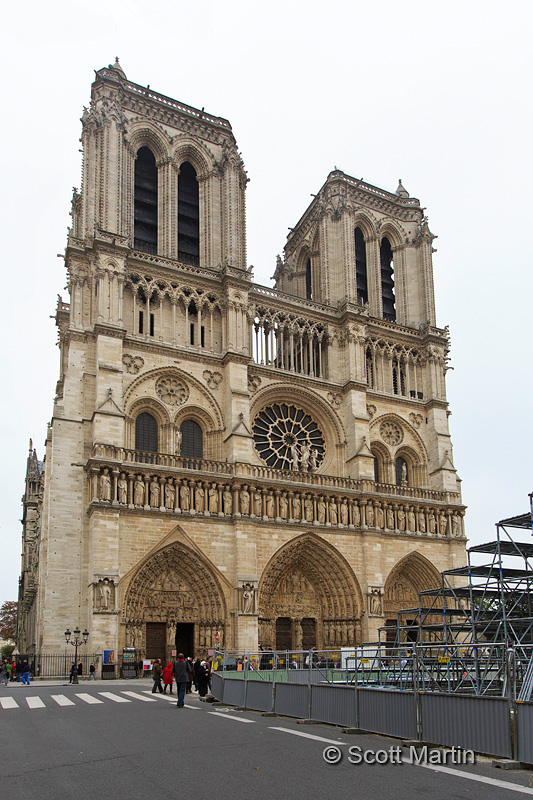
The cornerstone of the building was laid in 1163 and the western facade pictured above was finished in 1225 although the total structure was not completed until 1345. Although famous for the flying buttresses that support the library of the cathedral the western facade is what you visualize when you think about Notre Dame. The facade is large and impressive with its towers, rose window, balustrade, statues and three portals of entry. It measures 135′ wide and is 207′ high. The rose window in the centre of the facade is 31.5′ in diameter and forms a halo around the heads of a statue of Mary and Jesus which sits on the railing of the balustrade when viewed from the ground in front of the cathedral. Below the balustrade is a frieze that extends across the entire width of the facade, known as the Gallery of Kings containing twenty eight statues depicting the generations of Kings of Judah.
Below the Gallery of Kings are three large double sets of doors that form the main entrances, or portals, into the cathedral. The left (north) is the Portal of the Virgin (1210), the central Portal of the Last Judgement (1220) and the right Portal of Saint Anne (Mary’s mother) (1200). Each portal is framed by an ornate archway supported by columns or jambs that contain statues of Kings & Monarchs from Biblical times. Below are four at the Portal of Saint Anne.
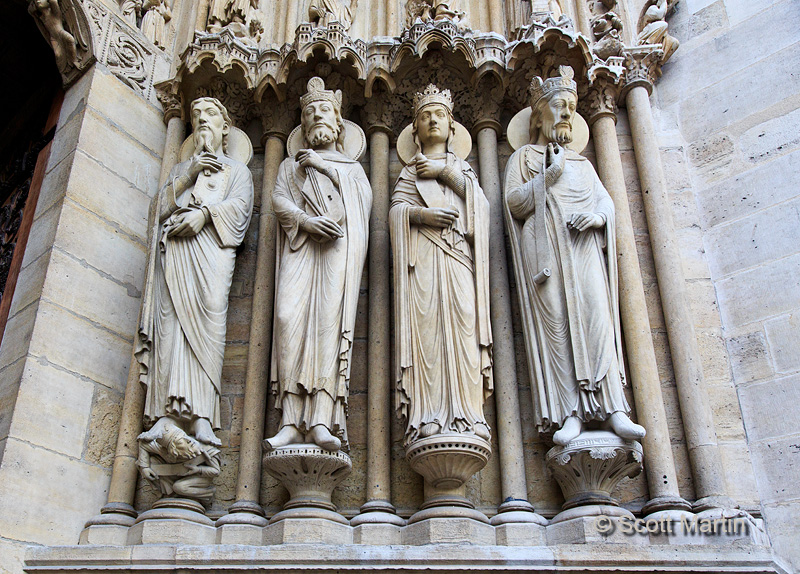
Flashes and tripods are not allowed in Notre Dame so very high ISO’s are required to generate exposure times fast enough to hand hold the camera in the deliberately dark interior (to prevent light degradation of the artefacts within). All of the interior images that follow were taken at ISO 4000 or more and I trust you enjoy these views from within Notre Dame.
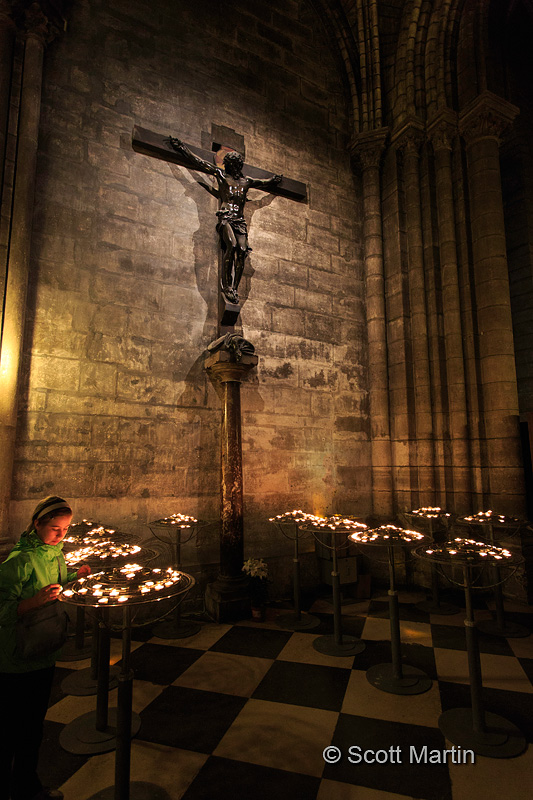
.
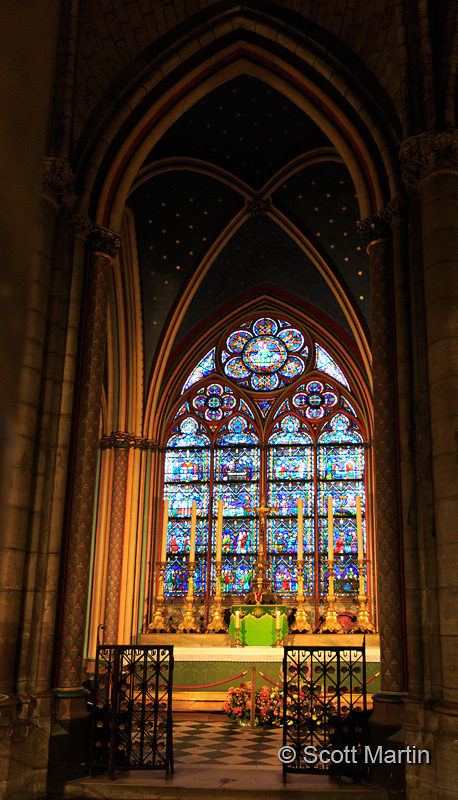
.
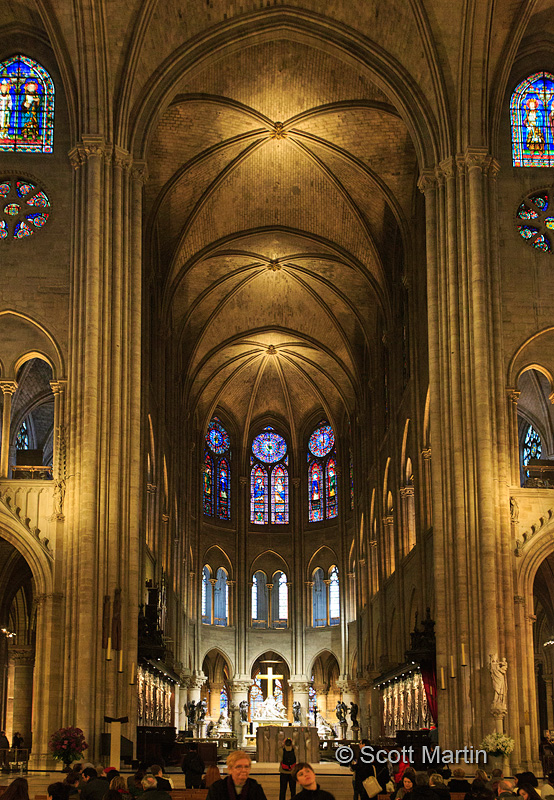
.
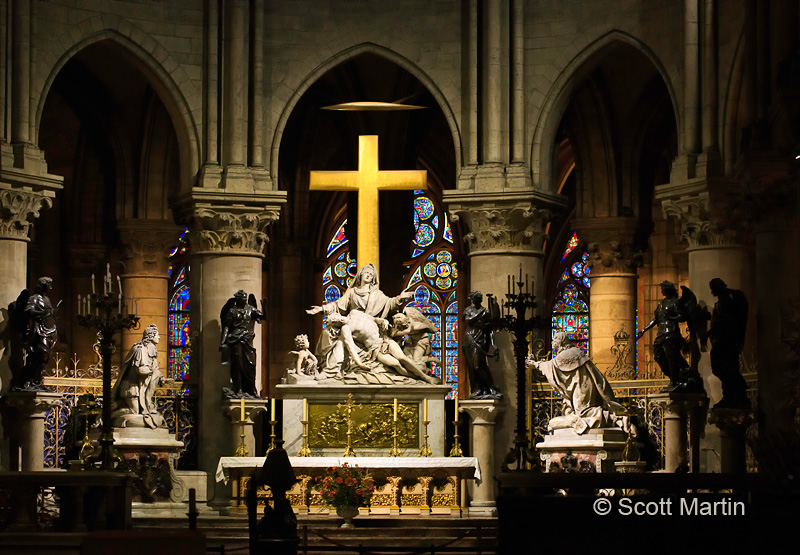
Notre Dame has two permanent and one portable organs. The great organ is said to be the most famous pipe organ in the world, having five keyboards, 190 stops and 8,000 pipes. The ‘smaller’ choir organ has two keyboards, thirty stops and 2,000 pipes.
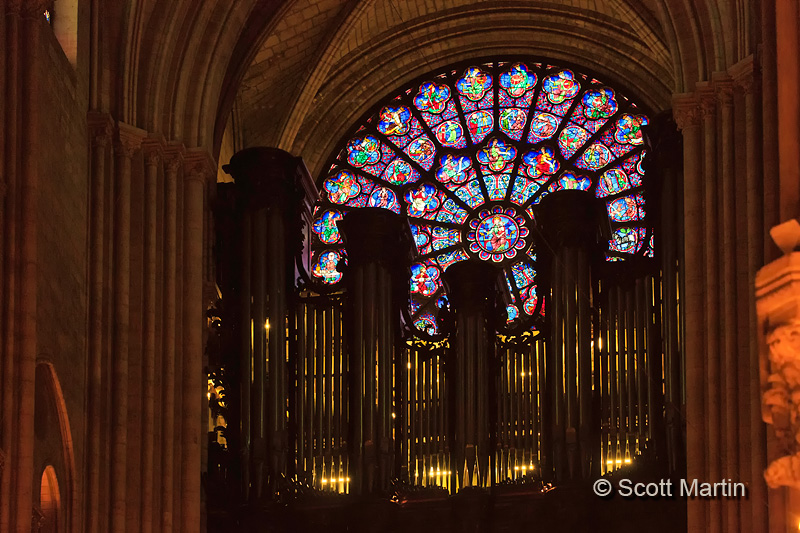
One can not walk through the cathedral and avoid thinking about Victor Hugo’s classic “The Hunchback of Notre Dame” and wondering where Quasimodo was. We could find no mention of him anywhere, however this next picture reminded me of him, probably because of the chandelier and the connection with the swinging chandelier in “Phantom of the Opera”….I know, same city, different building and completely different story 🙂
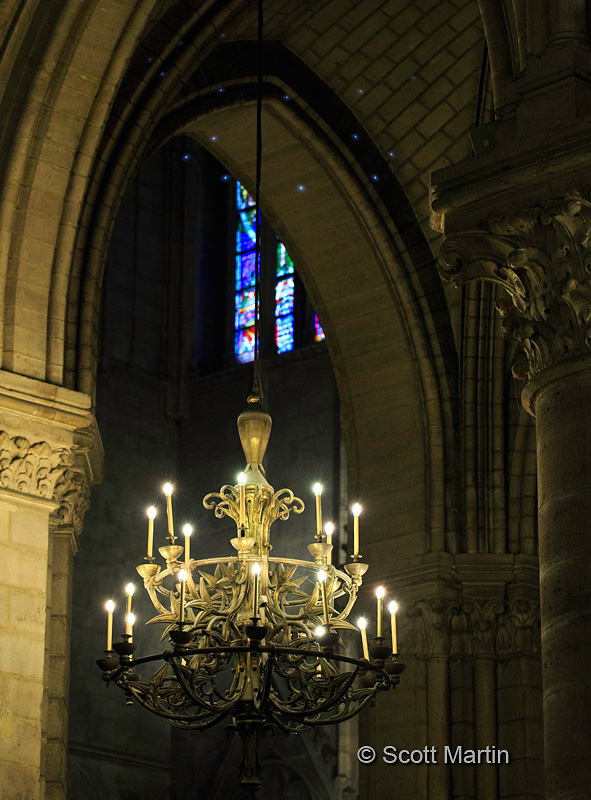
When shooting the interior of a large building like Notre Dame it is important to consider focal lengths as the photographic results are vastly different, and equally as impressive, at 16mm and 100mm. Its become our practice to make two passes through buildings like Notre Dame for a couple of reasons, first of all it takes a couple of trips through just to take in the magnificence of the structure and commit as much as possible to memory so it can be enjoyed over and over again. Looking at the building differently with each pass helps heighten your appreciation of the building as a whole as well. I take the first trip through ‘thinking wide’ and taking in the big picture and recording it with a 16-35 f2.8 zoom lens. The results of which are shown in the first three interior images above. The second trip through the building I think ‘detail’ and record it with a 100mm f2.8 macro lens which allows the recording of small details up close and big details from farther away. The last three images above were taken with the 100mm lens. The beauty of the 100mm macro is that it is a very small and therefore discreet lens that does not attract attention. It is also very light so carrying it around all day is not a hardship and thus it has found a permanent home in my travel camera bag. The only down side is that as a prime lens you must zoom and compose with your feet 🙂 If you don’t have this little stealth telephoto/macro in your bag I would highly recommend it to you.



Agree with Arni on the post Scott. Just marvelled at a) the buildings themselves but also at the photography. The detail in the 100 is great and one lens I don’t use enough. You continue to inspire me to take photography to the next level.
Thanks for your kind words Rob. Like you I don’t use the 100 as much as I should but it is fast becoming one of my favourite lenses.
Another wonderful post Scott as usual. Your descriptions compliment your photos. Even though you couldn’t use your 24-105, you certainly made good use of the wide-angle and macro lenses in your bag. I bet it is great to relive your trip through these blog posts.
Thanks Arni and its amazing how easy it is to relive the trip via these posts. Seems like yesterday! You are right about missing the 24-105, although the IS is better on the 100mm prime the versatility of the 24-105, albeit slower, is hard to beat.